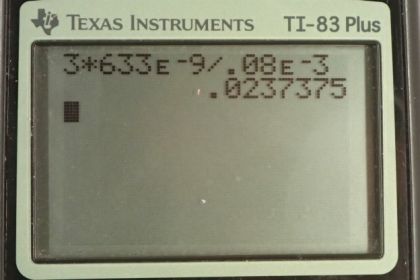Question
Using , calculate the distance between fringes for 633-nm light falling on double slits separated by 0.0800 mm, located 3.00 m from a screen as in Figure 27.56.
Final Answer
Solution video
OpenStax College Physics, Chapter 27, Problem 19 (Problems & Exercises)

vote with a rating of
votes with an average rating of
.
Calculator Screenshots
Video Transcript
This is College Physics Answers with Shaun Dychko. We're given an approximation for the separation on a screen between fringes in the interference pattern from the double slit experiment and it is the distance to the screen, which is X times the wavelength, divided by D, which is the separation between the slits. And, we're given all these information here where the distance to the screen is three meters and the separation between slits is 0.08 millimeters and the wavelength is 633 nanometers. So, the separation between the fringes then, Delta Y is going to be X Lambda over D, which is three meters times 633 times ten to the minus nine meters, divided by 0.08 times ten to the minus three meters, which is 0.0237838 meters, which, converted to centimeters, is 2.37 centimeters.
